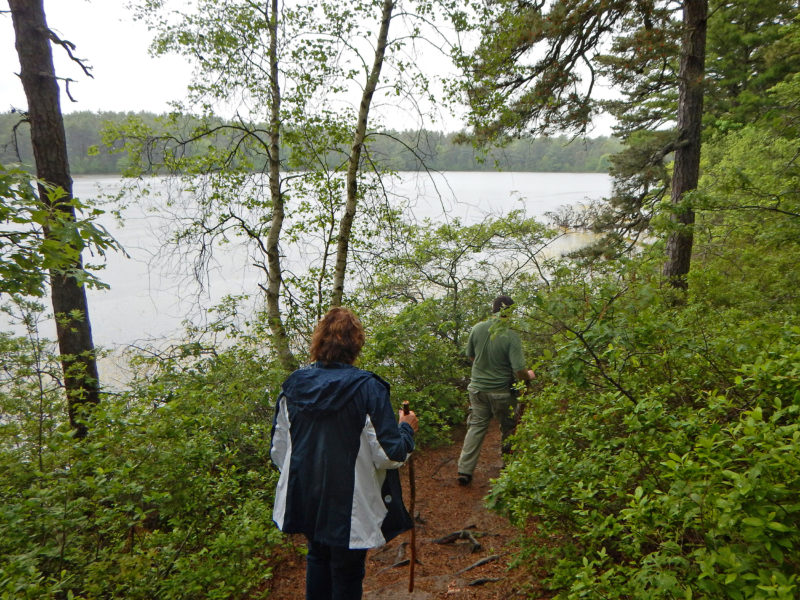Myles Standish State Forest
Discover deep forests at Myles Standish State Forest, the largest publicly owned recreation area in southeastern Massachusetts. With over 12,000 acres where you can hike, bike, fish, paddle, swim, camp, hunt, and ride horses among cranberry bogs, pine barrens, and kettle ponds, you’ll never run out of ways to have fun at Myles Standish.
Features
Myles Standish State Forest is one of the state’s largest and most important protected areas. Dozens of coastal kettle ponds and cranberry bogs decorate the landscape of rolling forested hills, creating a fascinating place to explore, relax, and enjoy the outdoors year-round.
Known as a “four season forest,” Myles Standish is a year-round destination for all types of outdoor activities. Hike and bike for miles through the forest, and then enjoy a swim at College Pond. Pitch a tent at one of the forest’s five camping areas, all set on secluded kettle ponds. Hunting is allowed in season, and the park’s two wildlife management areas are stocked with game birds in fall. Plus, with guided hikes and family programs throughout the year, rangers can help you discover all the forest has to offer.
Trails

Discover dozens of coastal kettle ponds among Myles Standish’s 12,000 acres of forests.
With 13 miles of hiking trails, 15 miles of bike trails, and 20 miles of equestrian-friendly trails, Myles Standish State Forest is home to the most extensive trail network in the Buzzards Bay region. Given all the options, we recommend you begin your trip at the Forest Headquarters, where you can look at maps and get advice from a ranger. (Download trail map)
For an easy introduction to hiking with kids or older adults, try the East Head Loop, a 2.6-mile path that hugs the shoreline of East Head Pond. Bring this nature guide along with you to point out some of East Head Pond’s sights like towering white pines, delicious blueberries in the understory, and muskrats peeking up from the pond’s surface.
If you’re looking for a longer adventure, turn onto the Bentley Loop to explore another 3.6 miles of unspoiled woodlands and beautiful meadows. The Bentley Loop connects with the Frost Pocket Path and the Pine Barrens Path, where you can hike for miles more through rare, unspoiled habitats.
Myles Standish is also a destination for road cyclists seeking a place to ride away from busier streets. Come here to leisurely pedal through the pines with your family on the 6.25-mile Camping Pond Loop, or twist and turn along the rolling 7.8-mile Rocky Pond Path for a more challenging adventure.
Habitats & Wildlife
Myles Standish State Forest protects special southeastern Massachusetts habitats where dozens of rare plant and animal species live. The forest is home to one of the largest remaining pine barrens ecosystems in the world. This mosaic of pitch pines and scrub oaks has several fascinating features, including “frost bottoms” where trapped cold air can collect and lead to frosty conditions even in summer.
In addition to the pine barrens, Myles Standish is home to nearly five dozen “kettle ponds”: glacier-created ponds that are fed by groundwater, rather than streams and rivers. Nestled within one of these ponds, Rocky Pond, are two working cranberry bogs where scientists test best management practices to share with local growers.
Forty-two rare and endangered species have been recorded at Myles Standish – more than any other state-owned property in Massachusetts. From moths and butterflies to reptiles and amphibians, the unique habitats at Myles Standish provide an important home for these wildlife to thrive.

 Download Property Map
Download Property Map